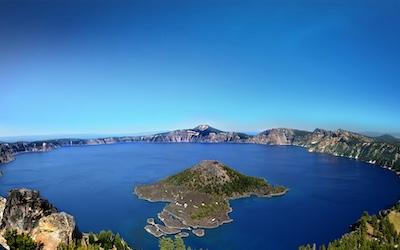Delineation of Endorheic Drainage Basins in the MERIT-Plus Dataset for 5 and 15 Minute Upscaled River Networks
Surface water flows, such as streams and rivers, define river basins or catchments, which drain to the ocean (exorheic) or inland seas and depressions (endorheic). Endorheic basins, which do not link to the seas, cover approximately 20% of the world's land surface and are critical for understanding water storage dynamics especially in the inland lakes and dry land aquifers. However, available river network databases, such as MERIT, lack information on endorheic basins, making hydrological modeling difficult. To close this gap, we created a method for identifying river mouths in MERIT upscaled river network datasets, discriminating between endorheic and exorheic basins. This river mouth delineation technique identifies missing basin categories and removes numerous minor endorheic watersheds. Our approach consists of two major steps: identifying basin types by their connectivity to the ocean without changing the original flow direction and integrating small endorheic basins with surrounding larger host basins while preserving the geographical extent of the endorheic regions.
The original upscaled IHU MERIT data is improved by the new MERIT-Plus river network datasets, which exhibit a notable decrease in the quantity of endorheic basins yet maintain the overall land area and structure of the inland basins. They consist of specialized data layers that identify endorheic basins: an endorheic basin ID-only gridded layer, and a signed integer flow direction data, where endorheic outlets are denoted by a value of -1 and exorheic outlets by zero. The upscaled 5 and 15 arc minute MERIT networks underwent testing and validation with the Water Balance Model making sure that endorheic lakes do not spill over the topographical depression boundaries, and yielding value-added datasets with extra basin type information that are accessible in the data repository. Furthermore, the cleansing of minor endorheic basins improved the datasets’ suitability for a range of hydrological modeling applications, although bringing about some localized alterations in flow direction and basin ID data. These applications include simulations of water balance and accumulation in land depressions and endorheic lakes, which are pertinent to research on the effects of climate change, hydrology in arid regions, trends in gravity anomalies, management of water resources, preservation of ecosystems, and evaluation of endorheic lake storage dynamics.
The MERIT-Hydro networks re-gridded by the Iterative Hydrography Upscaling (IHU) algorithm do not retain exo- or endorheic basin attributes from the original data. Here we developed methods to assign such attributes to those and any other digital river networks. The motivation is that endorheic inland drainage basins are essential for hydrologic modelling of global and regional water balances, land surface water storage, gravity anomalies, sea level rise, etc. First, we create basin attributes that explicitly label endorheic and exorheic catchments by the criteria of direct or hidden connectivity to the ocean without changing their flow direction grid. In the second step we alter the delineation of endorheic basins by the merging algorithm that eliminates small inland watersheds to the adjacent host basins. The resulting datasets have a significantly reduced number of endorheic basins while preserving the total land portion and topology of the inland basins. The data was validated using the Water Balance Model by comparing volume of endorheic inland depressions with modelled water accumulation in their inland lakes.

